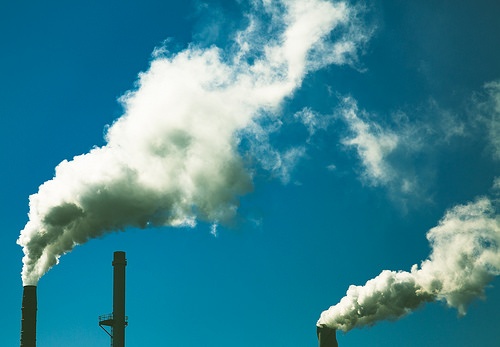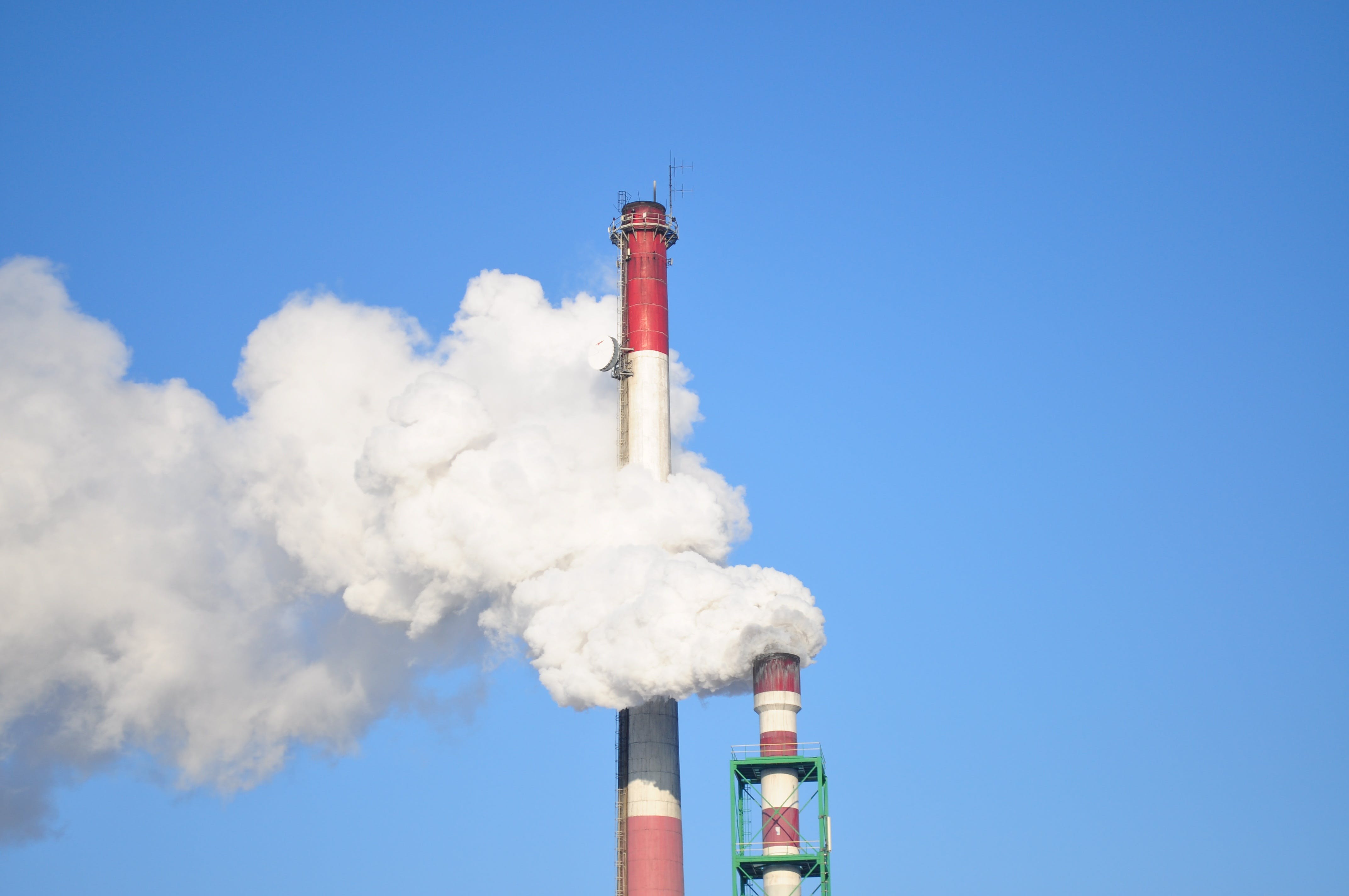On September 16, 2025, the US Environmental Protection Agency (EPA) published a proposal to eliminate the vast majority of its longstanding Greenhouse Gas Reporting Program (GHGRP), which requires thousands of facilities and organizations to report annual emissions of greenhouse gases (GHGs) (40 CFR part 98). (I’ve written about this program over the years, most recently when EPA issued massive revisions in April 2024 (see HERE). The remainder of this note briefly summarizes EPA’s latest interpretation and identifies the small portion EPA proposes to retain, and the existing GHGRP.
Audit, Compliance and Risk Blog
EPA proposes to eliminate most mandatory greenhouse gas emission reporting requirements
Posted by Jon Elliott on Fri, Oct 03, 2025
Tags: EPA, Greenhouse Gas, Clean Air Act, Climate, Environmental Compliance, EPA Regulations, EPA Standards, GHG Reporting, EPA enforcement, Climate Disclosure, Climate Risk, Air Quality
EPA delays deadline to report 2024 greenhouse gas emissions
Posted by Jon Elliott on Mon, Apr 28, 2025
Since 2011, the US Environmental Protection Agency (EPA) has administered an extensive Greenhouse Gas Reporting Program (GHGRP), which requires thousands of facilities and organizations to report annual emissions of greenhouse gases (GHGs) (40 CFR part 98). Although reports are usually due by March 31 of the following year, EPA has delayed the deadline for reporting year (RY) 2024 until May 30, 2025. EPA cites delays in making the new version of its Electronic Greenhouse Gas Reporting tool (e-GGRT) available.
Read More
Tags: EPA, Greenhouse Gas, sustainability, GHGRP, Environmental Compliance, Environmental Regulations, Carbon Reporting, GHG Reporting, Climate Reporting, Compliance Update, Emission Reporting, eGGRT
During 2024, at least five states considered legislation to enact “Climate Superfund” laws targeting fossil fuel companies, applying “polluter pays” principles enshrined in the US federal Superfund law (Comprehensive Environmental Response, Compensation and Liability Act (CERCLA of 1980) and its many state counterparts. At least two states enacted such laws – Vermont and New York. The rest of this note provides brief summaries of these laws.
Read MoreTags: Environmental risks, Environmental, Greenhouse Gas, climate change, Environmental Projects, Environment, Environmental Policy, Climate, environmental law, environmental protection, Environmental Compliance
California revises greenhouse gas emission and financial risk reporting laws
Posted by Jon Elliott on Tue, Nov 12, 2024
On September 27, 2024, California’s governor Gavin Newsom signed Senate Bill (SB) 219, amending greenhouse gas (GHG) emission reporting requirements for targeted organizations doing business in the state, enacted in 2023 (SB 253 (Wiener) (Climate Corporate Data Accountability Act) and SB 261 (Stern)) and initially scheduled to require compliance beginning January 1, 2025. (I wrote about them HERE) SB 219 revises and delays emissions reporting requirements. The revised requirements will still be administered by the California Air Resources Board (ARB), expanding its longstanding air quality and climate authority (GHG provisions center on the Global Warming Solutions Act of 2006 ((AB 32)). The remainder of this note discusses the revisions made by SB 219.
Read More
Tags: California Legislation, Environmental risks, Environmental, Greenhouse Gas, Environmental Projects, California, Environment, Environmental Policy
EPA updates and expands mandatory greenhouse gas emission reporting requirements
Posted by Jon Elliott on Mon, May 06, 2024
On April 25, 2024, the US Environmental Protection Agency (EPA) published very extensive technical revisions to its Greenhouse Gas Reporting Program (GHGRP), which requires thousands of facilities and organizations to report annual emissions of greenhouse gases (GHGs) (40 CFR part 98). These revisions finalize proposals published in June 2022 and May 2023. (I wrote about the second set HERE). The remainder of this note summarizes these changes. (I’ve written about EPA’s mandatory GHG reporting program several times, including HERE).
Read MoreTags: Environmental risks, Environmental, EPA, Greenhouse Gas, ghg, greenhouse, Environment, GHGRP
Canada: Federal Court rejects listing of Plastic Manufactured Items as “Toxic Substances” under Canadian Environmental Protection Act
Posted by Jon Elliott on Mon, Feb 19, 2024
Among its many provisions, the Canadian Environmental Protection Act (CEPA) creates several lists of “toxic substances,” and empowers Environment and Climate Change Canada (ECCC) to revise the list. In 2021, ECCC add “plastic manufactured items (PMI)” to one of these lists, but was sued by manufacturers seeking to void the addition. Extensive CEPA amendments were enacted in April 2023 (“Strengthening Environmental Protection for a Healthier Canada Act” (Bill S-5)), including revisions to the toxic substance lists – including recodification of the listing of PMI – and left ECCC’s authority over toxic substances relatively unchanged, so the litigation continued. In November 2023, the Federal Court ruled that the CEPA amendments did not moot the issues in the litigation, and ruled that ECCC had exceeded its statutory and constitutional authority when listing PMI.
Read MoreTags: Environmental risks, Environmental, Greenhouse Gas, climate change, Environment, Environmental Policy, Climate, ECCC, CEPA
On October 7, 2023, California’s governor Gavin Newsom signed two important bills expanding climate-related reporting requirements for targeted organizations doing business in the state – SB 253 (Wiener) (Climate Corporate Data Accountability Act) and SB 261 (Stern). These requirements will be administered by the California Air Resources Board (ARB), which already includes most state greenhouse gas (GHG) regulatory requirements within its extensive air quality and climate authority (centered on the Global Warming Solutions Act of 2006 (AB 32). The remainder of these note discusses these new requirements.
Read MoreTags: Environmental, Greenhouse Gas, ghg, California, Environment, Environmental Policy
Regulatory and market-based programs are steadily increasing opportunities for entities to contract with projects that reduce emissions of carbon dioxide and other greenhouse gases (GHGs), and to claim credit for those “carbon offsets.” Some such claims are used to satisfy formal air quality and GHG reduction requirements, while others are touted to enhance entities’ “green” credentials. Programs around the globe compile such claims, and some provide third party validations – but possible “greenwashing” of unjustified claims remains a significant concern. To address these concerns, California has just enacted legislation to regulate Voluntary Cabon Market Disclosures and penalize noncompliance (Assembly Bill (AB) 1305, Gabriel). These requirements synthesize the most thorough voluntary disclosure programs, and are intended not only to protect California consumers but to codify disclosure standards. The rest of this note summarizes carbon offsets, and AB 1305 requirements.
Read MoreTags: Environmental, Greenhouse Gas, greenhouse, California, Environment, Environmental Policy, environmental protection
EPA proposes to update and expand mandatory greenhouse gas emission reporting requirements
Posted by Jon Elliott on Fri, Jul 14, 2023
For over a decade, the US Environmental Protection Agency (EPA) has required thousands of facilities and organizations to report annual emissions of greenhouse gases (GHGs), in what it refers to as its Greenhouse Gas Reporting Program (GHGRP) (40 CFR part 98). On May 22, 2023, EPA published an extensive set of proposals to update and expand existing requirements. These proposals supplement and supersede proposals published in June 2022 but not acted on by the agency. The remainder of this note summarizes these proposals, focusing not on the many technical revisions to existing requirements but on proposals to target additional activities with reporting requirements. (I’ve written about EPA’s mandatory GHG reporting program several times, including HERE).
Read MoreTags: Environmental, EPA, Greenhouse Gas, Environment
Washington conducts first sales under its new state greenhouse gas cap-and-invest program
Posted by Jon Elliott on Mon, Mar 20, 2023
The Washington state Department of Ecology (Ecology) has just conducted its first auction of greenhouse gas (GHG) emission allowances, under the state’s Climate Commitment Act (or CCA) which establishes a comprehensive, market-based program to reduce carbon pollution and achieve greenhouse gas limits set in state law. The CCA was one of a package of climate-related laws passed in 2021, including the Clean Fuel Standard, and an expanded hydrofluorocarbons management program. The remainder of this note discusses CCA and the recent sale of GHG allowances.
Read MoreTags: Greenhouse Gas, ghg, greenhouse, CO2 Emissions, Washington, CCA






